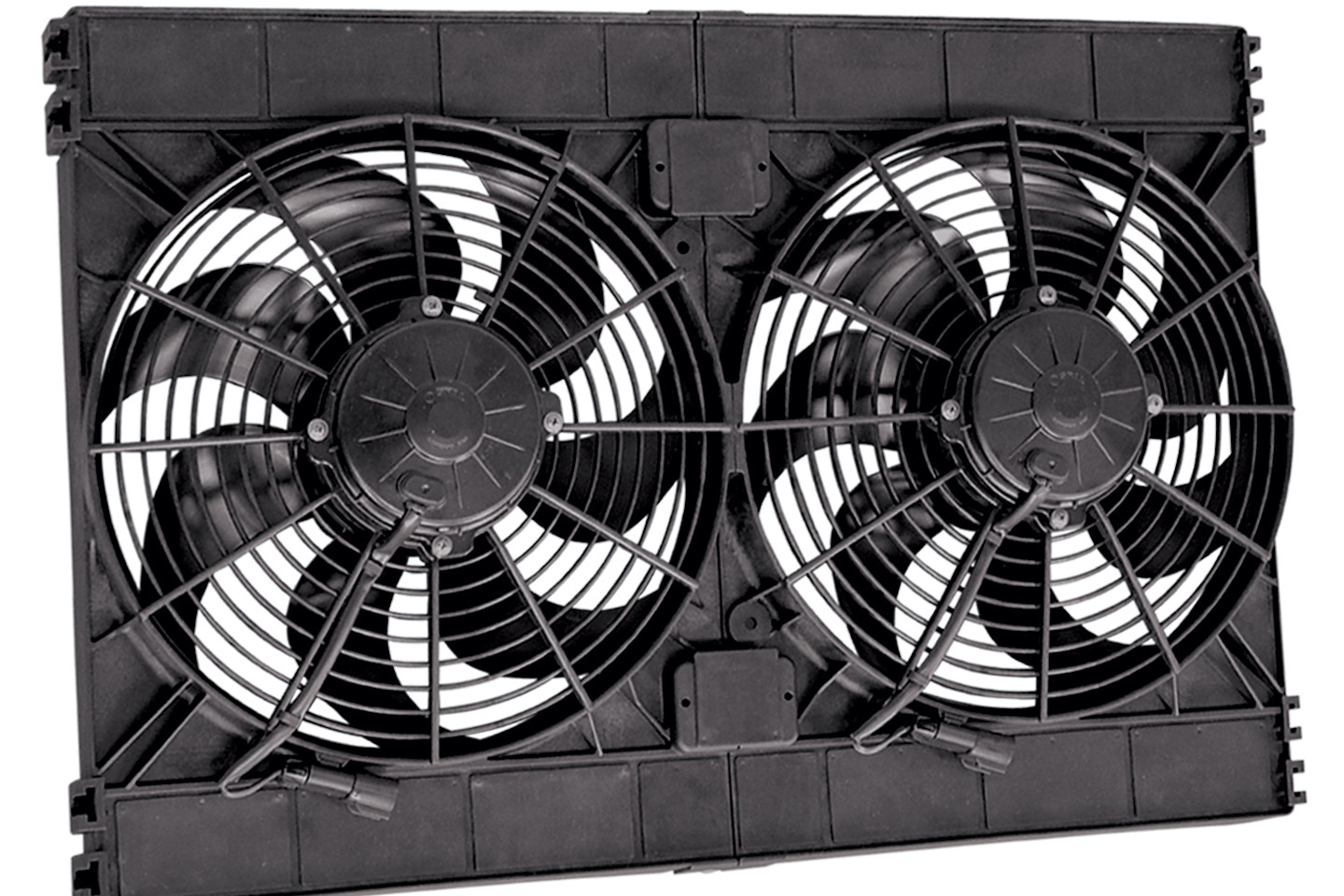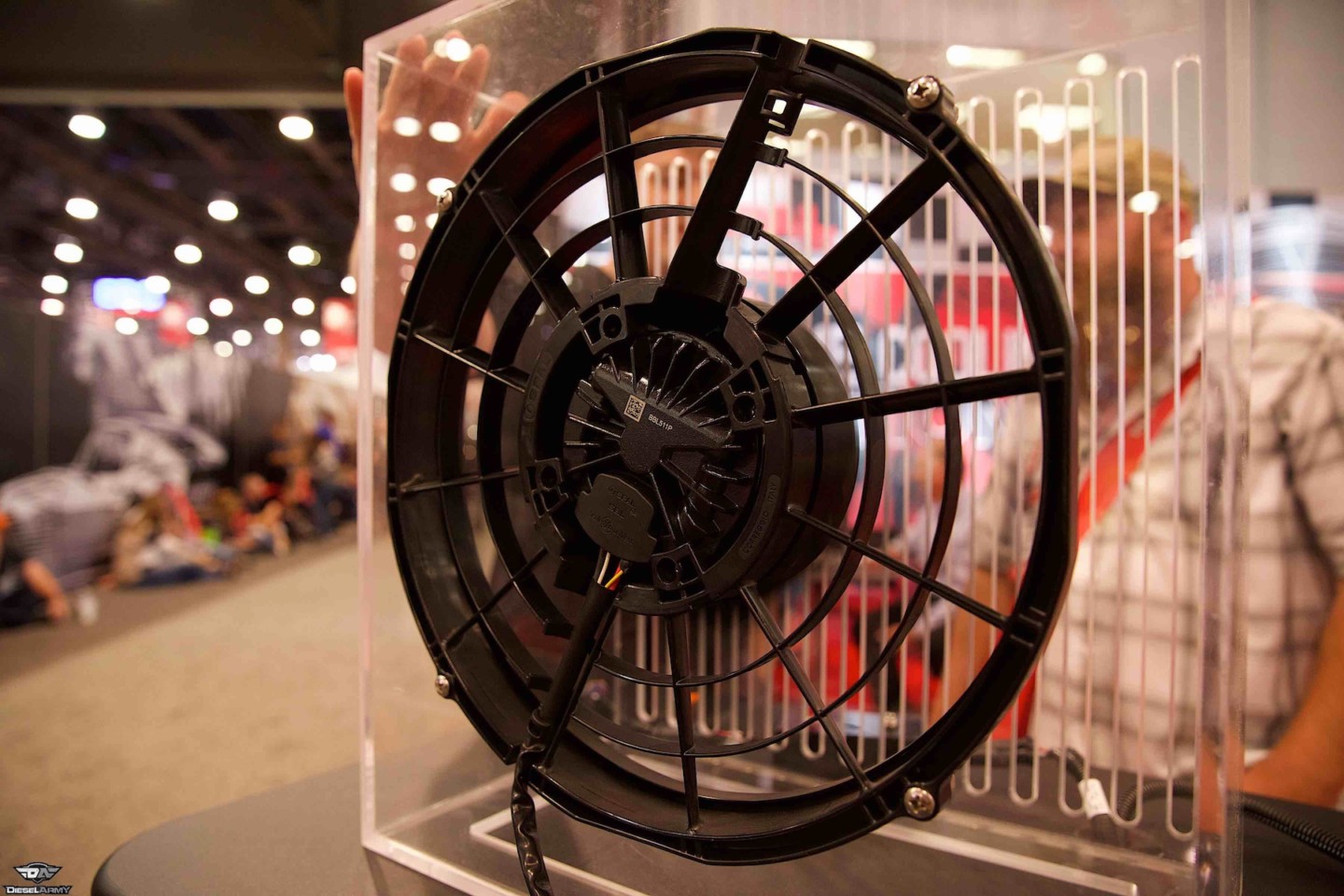What CFM Ratings Mean To You With SPAL Cooling Fans
When shopping for new automotive components, it never fails that we are bombarded with tricky sounding terms and acronyms. Many times, we are casually familiar with these acronyms and we may know what they stand for, but don’t actually know what it does. Take CFM for example. Most people can correctly state that CFM stands for Cubic Feet per Minute and it is a measurement of airflow. But, what does it really mean to car enthusiasts?
It is not uncommon to hear salesmen quote CFM numbers when explaining cooling fans. From time to time, you may also hear one representative explain how company X’s CFM numbers are not as accurate as company Y’s. So we approached the specialists at SPAL USA to explain CFM to us.
“One of the most common questions we hear from customers is ‘What is the CFM rating?’ of a particular fan,” said Thom Balistrieri, director of aftermarket sales for SPAL USA. “This is a tricky question, as it’s very important to understand how CFM ratings are determined as well as how much CFM an application actually requires.”
According to Balistrieri, CFM ratings should be looked at subjectively because there is not an accepted standalone method of measure when it comes to determining CFM ratings.
“Think of it like wheel horsepower. Different dynamometers [dynos] will give different wheel horsepower ratings,” Balistrieri explained. “Sometimes, there is a ‘correction factor’ from one dyno manufacturer to another. This is the same situation, where measuring on a machine with different certifications could give different data.”
Tabular Data
SPAL uses a broader spectrum of CFM data for consumers to understand a fan’s ratings. “We provide tabular airflow data to our customers,” Balistrieri added. “This tabular data allows our customers to see how the fans perform across the entire static-pressure range. This is critical information when selecting the correct fan for the job, and often, the most misunderstood aspect of fan selection,” he said. “When customers don’t consider the static pressure drop of the radiator, it’s easy to get a fan that is underpowered for the task.”
Balistrieri’s advice is to not get misled by trying to standardize and compare all the different methods of CFM measurement in the industry. He says there is an easier approach. “One way to determine if CFM ratings make sense is to look at the current draw of the fan.”
This approach states the current draw (in amps) is proportional to overall fan performance. “Motor-current draw is directly related to motor torque and the amount of pressure the fan can generate to overcome the restriction of the radiator,” he said. To put it even more simply: Increased amperage typically equates to increased airflow.
“We have a fan to solve nearly any circumstance you can imagine,” added Balistrieri. We actually put together an article about fan selection, and you can find that information by clicking here. According to Balistrieri, “just call (800) 345-0327 to talk to an experienced technician and determine which SPAL fan is best for you.” Or visit them online at www.spalusa.com.



